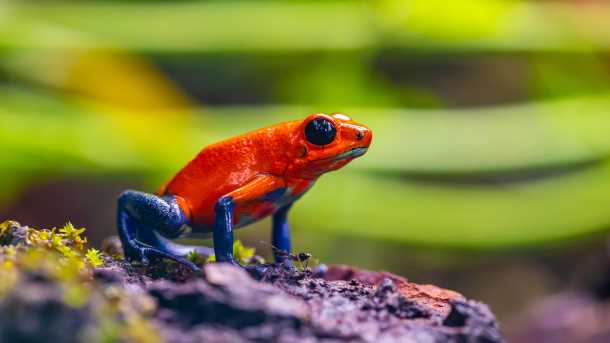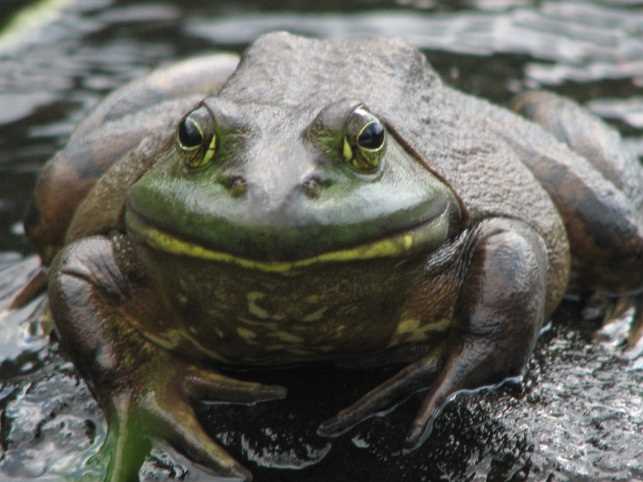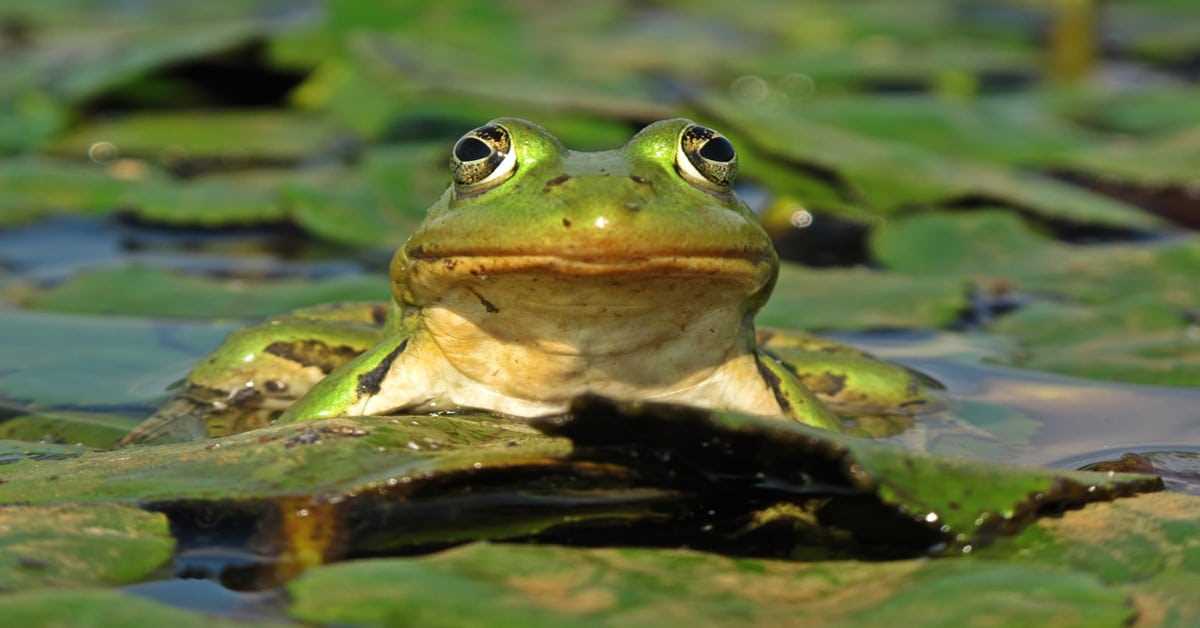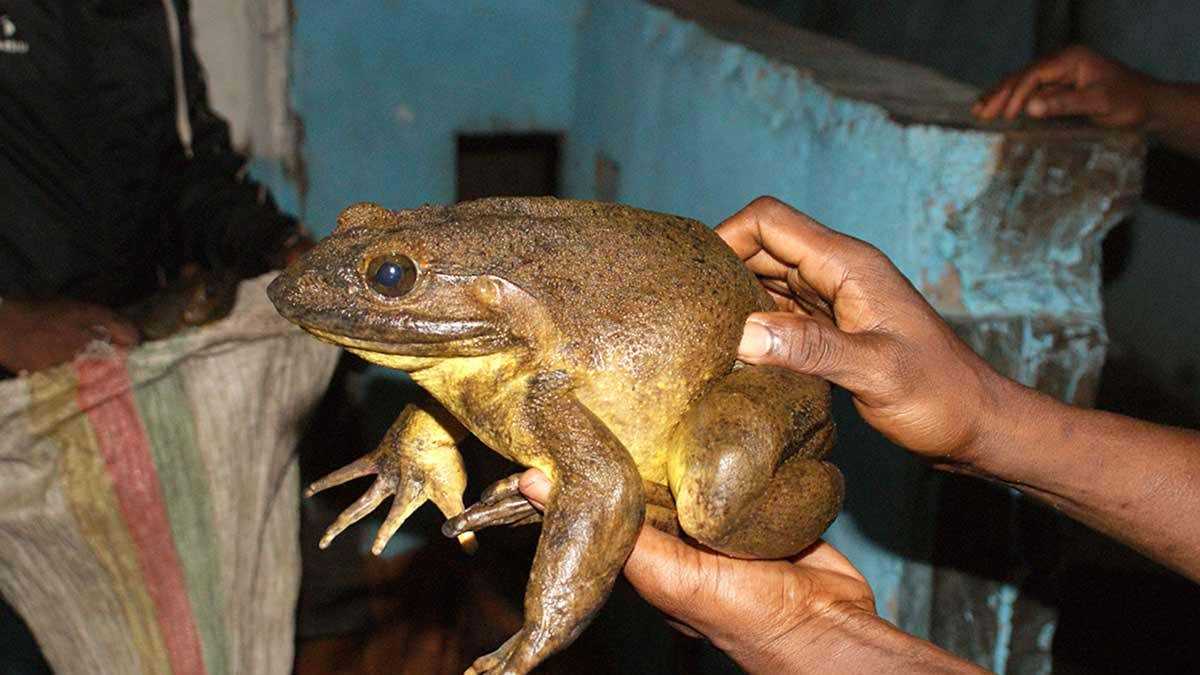
Have you ever wondered how long do frogs live for? Frogs, like many other animals, have a varying life span depending on their species and habitat. Some frogs have a relatively short life span, while others can live for several years. Let’s dive deeper into the fascinating world of frogs and explore their life span.
So, how long does the average frog live? Well, it varies. Most species of frogs have a life span ranging from 4 to 15 years. However, some species can live even longer, with the record for the oldest frog being 40 years old! Isn’t that incredible?
But what factors influence the life span of frogs? One important factor is their environment. Frogs that live in warmer climates tend to have a shorter life span compared to those in cooler environments. Additionally, availability of food, water quality, and predation also play a role in determining how long frogs live.
It’s worth mentioning that the life span of frogs can also differ between males and females. In some species, females generally live longer than males. This is thought to be due to the energy expended by males during mating activities and their higher vulnerability to predation.
The Longevity of Frogs: Discovering the Lifespan of These Amphibians

So, how long do frogs live? The lifespan of frogs varies depending on several factors, including species, habitat, and environmental conditions. On average, frogs can live for several years, with some species living up to 10 or even 20 years.
The habitat of frogs also plays a crucial role in their longevity. Species that live in aquatic environments tend to have longer lifespans compared to those that inhabit land. This is because aquatic habitats provide a stable and consistent environment for frogs, with access to food and protection from predators.
Predators and threats also significantly impact the lifespan of frogs. Frogs are vulnerable to various predators, including birds, snakes, and other amphibians. Additionally, the destruction of their habitats, pollution, and climate change can all decrease their lifespan.
Reproduction is another essential aspect of the lifespan of frogs. Female frogs typically have a longer lifespan than males because they invest more energy in reproduction. Males often have shorter lifespans due to the energy expended during mating calls and defending territories.
The lifecycle stages of frogs also contribute to their overall lifespan. Frogs go through several stages, including egg, tadpole, and adult. The length of time spent in each stage varies among species and can affect their overall lifespan.
To preserve the lifespan of frogs, conservation efforts are crucial. Protecting their habitats, reducing pollution, and minimizing the impact of predators are all essential steps in ensuring the longevity of these fascinating amphibians. Through conservation initiatives, we can continue to study and appreciate the incredible lifespan of frogs.
Life Expectancy of Frogs: How Long Can They Live?
Frogs, like many amphibians, have varying lifespans depending on factors such as species, habitat, and individual health. The question of how long frogs live is a topic of interest for researchers and nature enthusiasts alike.
On average, the lifespan of frogs ranges from 4 to 15 years. However, there are exceptions to this generalization. Some frog species have been known to live for over 40 years in captivity, while others may only survive for a few years in the wild.
Several factors can influence the lifespan of frogs. One crucial factor is the habitat in which they live. Frogs that inhabit aquatic environments generally have a longer lifespan compared to land-dwelling species. This is because water provides a more stable and suitable environment for their survival.
Predators and threats also play a significant role in determining the lifespan of frogs. Frogs that are exposed to a higher risk of predation or habitat destruction may have shorter lifespans. Human activities, such as deforestation and pollution, can have severe consequences for frog populations and reduce their average lifespan.
The lifecycle stages of frogs also contribute to their overall lifespan. From tadpoles to adults, frogs undergo significant transformations and face various challenges along the way. The survival rates during each stage can impact the lifespan of frogs, as some individuals may not make it through the entire lifecycle.
Table: Frog Lifespan by Species

| Species | Average Lifespan (in years) |
|---|---|
| American Bullfrog | 7-9 |
| Red-eyed Treefrog | 5-10 |
| Common Frog | 4-6 |
| Goliath Frog | 15-20 |
| Australian Green Tree Frog | 16-20 |
Conservation efforts are crucial for preserving the lifespan of frogs. Protecting their habitats, reducing pollution, and educating the public about the importance of frogs in ecosystems are essential for their survival.
Conclusion
The life expectancy of frogs can vary greatly depending on species, habitats, and various factors. While the average lifespan of frogs ranges from 4 to 15 years, some species can live much longer. It’s vital to understand the factors that influence their lifespan and work towards conserving their habitats to ensure the longevity of these fascinating amphibians.
Factors Influencing the Lifespan of Frogs
1. Habitat: The quality and availability of suitable habitats directly affect the lifespan of frogs. Frogs living in diverse and undisturbed habitats tend to have longer lifespans compared to those inhabiting areas with limited resources.
3. Predators: Predation is a significant threat to the lifespan of frogs. The presence of predators can reduce their lifespan, as frogs need to constantly evade and protect themselves from potential threats.
4. Disease and parasites: Like any other living organism, frogs are susceptible to diseases and parasites. Infections and infestations can weaken their immune systems and reduce their lifespan.
6. Genetic factors: Genetic makeup plays a significant role in determining the lifespan of frogs. Some individual frogs may have inherent genetic adaptations that allow them to live longer or resist certain environmental stresses better than others.
7. Availability of food: Adequate and varied food sources are essential for the survival and longevity of frogs. Limited access to food can lead to malnutrition and decrease their lifespan.
Frog Species with the Longest Lifespan

- African Clawed Frog (Xenopus laevis): This species of frog is known to have a lifespan of up to 20 years in the wild. In captivity, they can live even longer, with some individuals reaching 30 years or more.
- Australian Green Tree Frog (Litoria caerulea): These iconic frogs can live for about 16 years in the wild. With proper care, they can live up to 25 years in captivity.
- Cane Toad (Rhinella marina): Despite being considered an invasive species, cane toads have an impressive lifespan of up to 10 years in the wild.
- Northern Leopard Frog (Lithobates pipiens): This North American frog species can live for up to 9 to 10 years in the wild.
Does the Long Lifespan of Frogs Account for Differences between Aquatic and Land Frogs?
Longevity of Frogs
Frogs, like many other amphibians, have relatively short lifespans compared to other animals. However, there are some species of frogs that can live for several years, and even decades, in captivity or under ideal conditions in the wild. The lifespan of frogs can vary greatly depending on various factors.
Differences between Aquatic and Land Frogs
One of the factors that significantly influences the lifespan of frogs is their habitat. Aquatic frogs, which spend most of their lives in water, generally have a longer lifespan compared to land frogs. This is because they are not exposed to the same predators and threats that land frogs face on a daily basis.
Predator Threats
Environmental Factors
Additionally, environmental factors such as temperature and humidity play a significant role in the lifespan of frogs. Land frogs often face more extreme variations in temperature and humidity compared to aquatic frogs, which can have a negative impact on their overall health and lifespan.
Adaptations for Survival
Frogs have evolved various adaptations to survive in their respective habitats. Aquatic frogs, for example, have streamlined bodies and powerful hind limbs for efficient swimming. They also have webbed feet that enable them to move quickly in water. These adaptations not only enhance their ability to catch prey but also help them avoid predators, ultimately increasing their chances of survival and extending their lifespan.
On the other hand, land frogs have adapted to living in more terrestrial environments. They have strong legs for hopping and climbing, and their skin may contain toxins or protective coloration that acts as a defense mechanism against predators. While these adaptations serve to protect land frogs, they do not provide the same level of safety and longevity as that of aquatic frogs.
The Lifespan of Frogs: A Delicate Balance
The Impact of Habitat on the Lifespan of Frogs
The habitat in which frogs live has a significant impact on their lifespan. Different frog species have adapted to various types of habitats, including aquatic environments such as ponds, lakes, and rivers, as well as terrestrial habitats like forests, grasslands, and deserts. These habitats play a crucial role in the survival and longevity of frogs.
On the other hand, land frogs face greater challenges in terms of their lifespan. They are more susceptible to dehydration and temperature fluctuations, which can lead to stress and health issues. Land frogs must find suitable hiding spots, such as burrows or vegetation, to escape extreme temperatures and predators.
Adaptations for Different Habitats
Land frogs, on the other hand, have strong legs built for hopping and climbing, enabling them to navigate through various terrains. They also possess camouflaging abilities and protective coloration, which help them blend into the environment and avoid predators. Some land frogs also have the ability to create mucous membranes on their skin, which helps prevent dehydration in dry habitats.
Threats to Habitat and Lifespan
The degradation and destruction of natural habitats pose a significant threat to the lifespan of frogs. Pollution, deforestation, and urban development contribute to the loss of suitable habitats for frogs, leading to population decline and increased vulnerability to extinction. Habitat fragmentation also isolates frog populations, reducing genetic diversity and increasing the risk of inbreeding and genetic disorders.
Conservation efforts play a vital role in preserving frog habitats and ensuring the longevity of these amphibians. Measures such as habitat restoration, water pollution control, and the establishment of protected areas can help mitigate the threats facing frogs and provide them with suitable environments to thrive in. Education and public awareness are also crucial in promoting the importance of maintaining healthy habitats for both frogs and the overall ecosystem.
Predators and Threats that Reduce the Lifespan of Frogs
Frogs are fascinating creatures that have adapted to a variety of different habitats, from the depths of the rainforest to the arid deserts. However, despite their ability to survive in diverse environments, frogs face numerous predators and threats that can significantly reduce their lifespan.
Another significant threat to frogs is habitat destruction. Human activities, such as deforestation and urbanization, have led to the destruction of many frog habitats. This loss of habitat makes it difficult for frogs to find suitable places to live and reproduce, ultimately reducing their lifespan.
Climate change is another factor that impacts the lifespan of frogs. Rising temperatures and altered weather patterns can disrupt the delicate balance of ecosystems, affecting the availability of food and water for frogs. These changes can lead to malnutrition and dehydration, resulting in a shortened lifespan.
Invasive species, such as predatory fish or amphibians, also pose a threat to frogs. When introduced into new environments, these species can outcompete native frogs for resources and prey upon them, further diminishing their numbers.
Lastly, diseases, such as chytridiomycosis, have decimated frog populations around the world. This fungal infection affects the frogs’ skin, impairing their ability to breathe and regulate water and electrolyte balance. Infected frogs often experience severe skin lesions and eventually succumb to the disease, drastically reducing their lifespan.
| Predators and Threats | Impact on Frog Lifespan |
|---|---|
| Snakes | Can consume frogs, reducing their numbers |
| Birds | Feed on small frogs, decreasing their population |
| Habitat destruction | Reduces availability of suitable habitats for frogs |
| Chemical pollutants | Contaminate water bodies and harm frogs’ health |
| Climate change | Affects food and water availability for frogs |
| Invasive species | Outcompete and prey upon native frogs |
| Diseases | Chytridiomycosis and other infections can be fatal to frogs |
Overall, frogs face numerous predators and threats that can have a significant impact on their lifespan. Conservation efforts to protect frog habitats, reduce pollution, and control invasive species are crucial for preserving the longevity of these fascinating amphibians.
The Importance of Reproduction in the Lifespan of Frogs
Reproduction plays a vital role in the long life of frogs. It is a crucial aspect that determines the continuation of their species. Frogs have evolved elaborate reproductive behaviors and strategies to increase their chances of survival and successful breeding.
Unlike some animals that have a long lifespan and reproduce late in life, frogs have a different strategy. They start reproducing relatively early, often within the first year of their life. This early reproductive capability allows them to pass on their genes and contribute to the future generations.
Furthermore, the process of reproduction in frogs has an impact on their overall lifespan. Male frogs often engage in intense competition to mate with females by calling, posturing, or fighting with other males. This competition can be physically demanding and stressful for male frogs, potentially impacting their health and longevity.
The reproductive success of females also affects their lifespan. Female frogs invest a significant amount of energy and resources in producing and caring for their eggs. This process can take a toll on their bodies, especially since many female frogs lay eggs multiple times throughout their lifespan.
Lifecycle Differences between Male and Female Frogs
Frogs are fascinating creatures that have captivated the attention of scientists and nature enthusiasts for centuries. One aspect of their lives that is particularly interesting is the difference in lifespan between male and female frogs. While both males and females can live for a considerable amount of time, there are certain factors that influence their lifespan in different ways.
Male Frogs
Male frogs typically have a shorter lifespan compared to their female counterparts. This can be attributed to a variety of factors, including their reproductive behavior.
Female Frogs
On the other hand, female frogs tend to have a longer lifespan compared to males. This can be attributed to several factors, including their reproductive behavior and physiology.
Additionally, female frogs have a unique ability to store sperm for extended periods, allowing them to reproduce multiple times without the need for constant mating. This reproductive strategy reduces the physical stress associated with mating and can ultimately contribute to a longer lifespan.
Conclusion
Lifecycle Stages: How Does the Lifespan of Frogs Progress
Egg Stage:
The lifecycle of a frog begins with eggs. Female frogs lay their eggs in water, typically in clusters or masses. These eggs are covered in a jelly-like substance that provides protection and moisture. The length of the egg stage varies depending on the species and environmental conditions.
During this stage, the eggs develop into tadpoles, which are aquatic and have gills for breathing. The eggs hatch, and tadpoles emerge, beginning their journey towards adulthood.
Tadpole Stage:
Metamorphosis:
Metamorphosis is a crucial stage in the frog’s lifespan. During this transformation, the tadpole undergoes significant changes to become a fully-formed adult frog. The gills are replaced by lungs, allowing for respiration in the air.
The tail eventually disappears, and the frog’s body shape changes as it adapts to life on land. The process of metamorphosis can take several weeks or months, depending on the species and environmental factors.
Adult Stage:
Once the frog completes metamorphosis, it enters the adult stage. At this point, the frog is fully developed and capable of reproducing. Adult frogs can live both in water and on land, depending on their species.
The lifespan of adult frogs varies greatly depending on factors such as species, habitat, and availability of resources. Some frogs may live for several years, while others may only live for a few months.
Lifecycle Stages: How the Lifespan of Frogs Progresses
| Stage | Description |
|---|---|
| Egg | The first stage in the life of a frog is the egg stage. Female frogs lay their eggs in water or moist environments. The eggs are usually attached to vegetation or placed in foam nests. The time it takes for the eggs to hatch varies depending on the species and environmental conditions. |
| Tadpole | After the eggs hatch, tadpoles emerge. Tadpoles are aquatic and have gills to breathe underwater. They feed on algae, plant matter, and small organisms. During this stage, they undergo a series of transformations, including the growth of hind limbs and the development of lungs. |
| Froglet | |
| Adult Frog | Finally, the froglets complete their metamorphosis and become fully formed adult frogs. They have developed lungs for breathing air and have adapted to a terrestrial lifestyle. Adult frogs may live in various habitats, including forests, wetlands, and even urban areas. |
